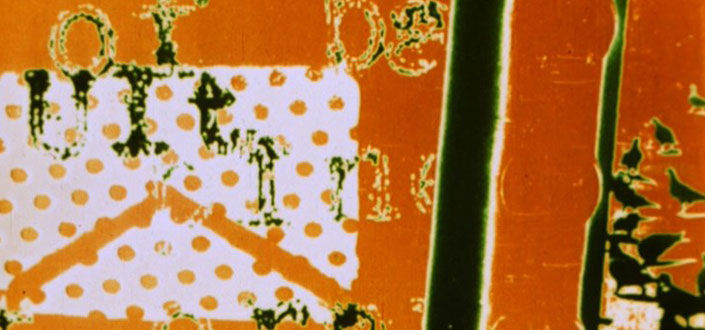Send and Receive
10 April 2016
by Ashwaq Basnawi
More than thirty guests from the academic, poetry and visual arts community came together last Thursday, February 5th, 2015, to take part in a stimulating and thought-provoking event.

“Send & Receive: Poetry, Film & Technology in the 21st Century” was a poetry symposium hosted by FACT in conjunction with the Centre for New and International Writing, University of Liverpool, PoetryFilm and the Poetry Society. Participants were invited to ‘imagine the future of poetry’ in a day filled with presentations, showreels, and facilitated discussions.
Roger McKinley, Innovations Manager at FACT, opened the symposium with a presentation encouraging the attendees ‘to think about the potentials, difficulties, dialogues and collaborative possibilities that these new forms of poetry might take on’. Prof. Deryn Rees-Jones and Judith Palmer joined McKinley in introducing the event. Rees-Jones as the director of the Centre for New and International Writing talked about the objectives and scope of the newly-formed centre, and Palmer presented the Poetry Society’s latest activities.
The sessions were broadly divided into three themes: Twitter poetry and digital poetry, visual poetry and visual perception labs, PoetryFilms and archival material in literature. Featured speakers were: George Szirtes (poet and translator), Jason Nelson (digital and hypermedia poet and artist), Prof. Deryn Rees-Jones (poet and critic), Dr. Marco Bertamini (founder of Visual Perception Lab, University of Liverpool), Zata Kitowski (founder and director of PoetryFilm), and Prof. Suzie Hanna (animator and chair of Animation Education at Norwich University of the Arts).
The presentations inspired a questioning of the new art forms during the facilitated discussions: Should we extend the definition of poetry? Does co-creation really exist in digital poetry, or is the maker in control? Are these representations really new, or are they reiterating avant-garde art? As a resolution to these questions, attendees suggested that traditional readers and writers of poetry might find these new art forms appealing by approaching them in a different way, and that more transparency in the creation process was needed to understand the significance of this form.
I found my own research on poetic collaborations in contemporary women’s writing well situated within the co-creational aspect of this new art form as poet Marilyn Hacker establishes connections and forms literary dialogues across linguistic and cultural borders. As such, my topic aptly echoes the cross-cultural aspirations of the Center for New and International Writing. I gained new understanding of the relationship between writer and text from Prof. Rees-Jones’ gripping presentation on the experience of transforming textual/print poetry into visual poetry. Further, Kitowski’s talk on multimodal semiotic systems inspired me to look at how traditional poetic forms such as the sonnet can be perceived as a new meaning-making system if aspects of its shape, poetic movement and semiotics serve the female poet to establish new dialogues.
As a researcher in contemporary women’s poetry, I came away from the symposium with a new appreciation for poetry’s inherent versatility, and for its enduring appeal to continuing and new generations.
Ashwaq Basnawi is a second year postgraduate in the Department of English, studying the poetry of Marilyn Hacker.